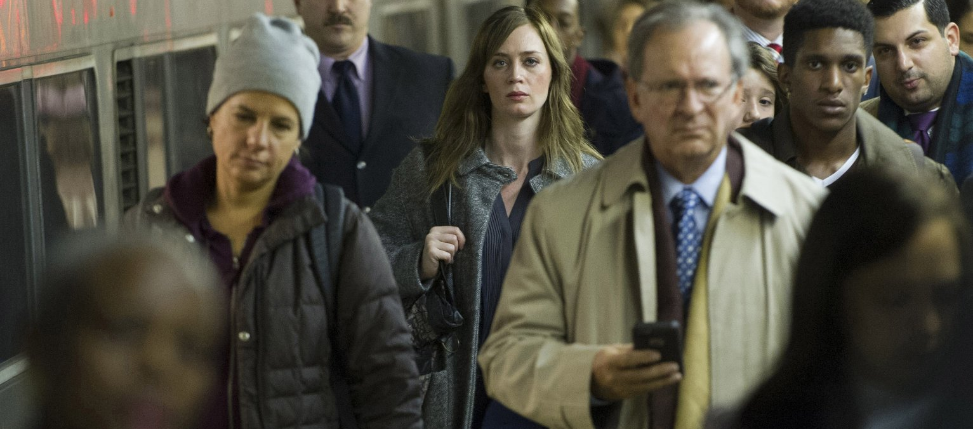Psychological thrillers earn praise when executed well. Their mind-boggling plot schemes cue existential crisis along the lines of reality versus figments of imagination, but because of that very tendency, films of this nature sometimes fail to center importance around characters and cinematography. The Girl on the Train is a poignant, distinct addition to the psychological thriller repertoire. Besides the dynamic, mysterious plot, and the multidimensional characters, the film merits praise based on its artistic flair. Following suit with other psychological thrillers, the film prompts contemplation, but strays from the pack because of its inventive delivery.
Unlike the majority of films of this genre, The Girl on the Train satisfies through its fairly hard-set ending and outcome. Based on the critically acclaimed novel by Paula Hawkins, the film begins with the protagonist, Rachel (Emily Blunt). A woman of many personas, we first meet Rachel as she struggles with alcoholism and fails to let go of her past. She continuously lives through visions of others instead of progressing in her own life, until the death of a stranger electrifies her narrative. The two other leads are Megan (Haley Bennett), a numb, highly sexual individual, and Anna (Rebecca Ferguson), a seemingly quintessential wife and mother. Outside of the main trio, Tom, played by Justin Theroux, is presented as Rachel’s ex-husband and Anna’s current husband. The film links the lives of these women from the start, with each segment of the film divided by character until the end when we see how the characters are tightly interwoven into a bloody mystery involving adultery, love, and lunacy.
The film strongly typifies each of these women: Megan is the astray individual filling the void with cold sex, Rachel is the scattered imbecile doubling as a modernized spinster, and Anna is the textbook loving mother and wife. The earthy, neutral tones of the scenes are evidence that the psychological identities of each woman hold first priority. Rather than stunning special effects or eye-popping backdrops, the leading ladies command the screen. There is no need for frills. Instead, subtle, graceful cinematic details and an understated color palette allow the actresses to truly take center stage. Character development reigning, each actress strips down and showcases their talent to the fullest. Emily Blunt in particular provides an unbelievable performance in her portrayal of a mentally troubled woman: her disheveled appearance and execution of drunken stupor throughout the film leave the audience convinced of her incompetence and utter lunacy.
The whole film is surrounded by a cloud of darkness. While she executes the persona of a madwoman, Blunt fails to add the intended horror element of her character to the film Her disturbing criminal acts instead translate into comedy. However, the sinister imagery and atypical film techniques, including but not limited to unorthodox camera angles and distorted flashback images, used to capture Rachel’s lunacy add a stylistic accolade to this film.
Bennet’s character, Megan, is the other most compelling personality in the film. This sultry yet sad and void woman is the vehicle for sex in the movie. However, the blood, graphic sex, and nudity are not added in vain: each of these taboos importantly contributes to a dimensional plot. On that note, the film’s timing is impeccable: the somber picture of Megan and her husband, naked in their shower, paints the picture of a woman surrendering, which ties into her existing rather than living. Additionally, a dark flashback scene has one brief image of Megan’s pale, naked frame outside in the forest as she panics amid loss and crisis, showing her as an animalistic individual, at odds with the world.
That being said, the characters’ mental dilemmas are revealed and focused on with help from strange, unique cinematography. Most of the time, the camera gets up close to the characters’ features and incites the audience to notice gaunt under-eye circles or wisps of disheveled hair. One noteworthy instance of this is when Megan meets with her therapist and the camera holds still on her portrait: her cat-like eyes and dewey, freckled skin fill the screen. Her mental isolation is further communicated as her eyes bore into space, from this distinct angle. Slow motion images of breaking glass and water droplets add drama to plot, enriching the subtle tension between characters.
The Girl on the Train earns distinct praise based on its renowned characters and use of cinematography to aid its dark plot. The impinging murder mystery captures audiences, but the mode in which this situation is laid out lets it stand alone among contemporary psychological films.





